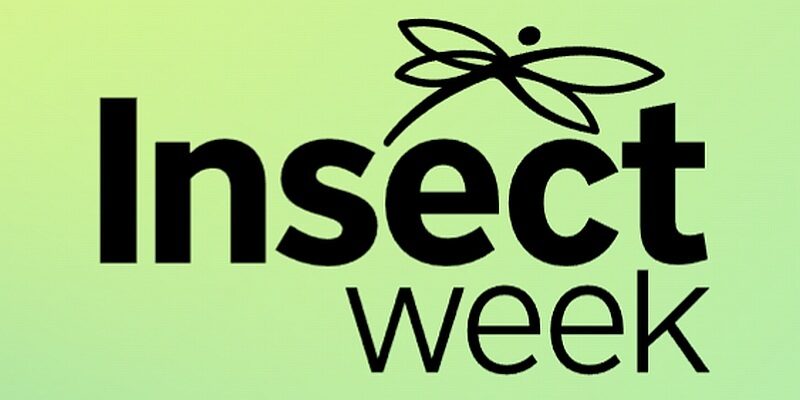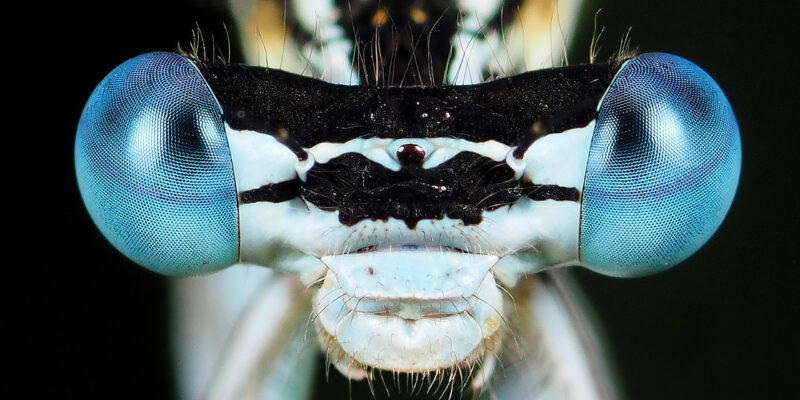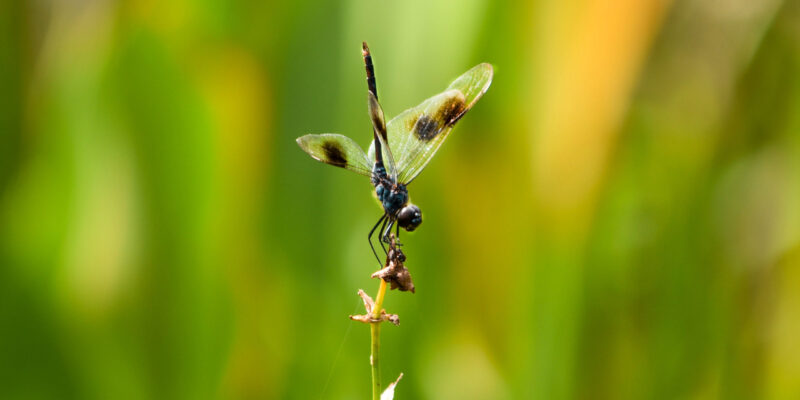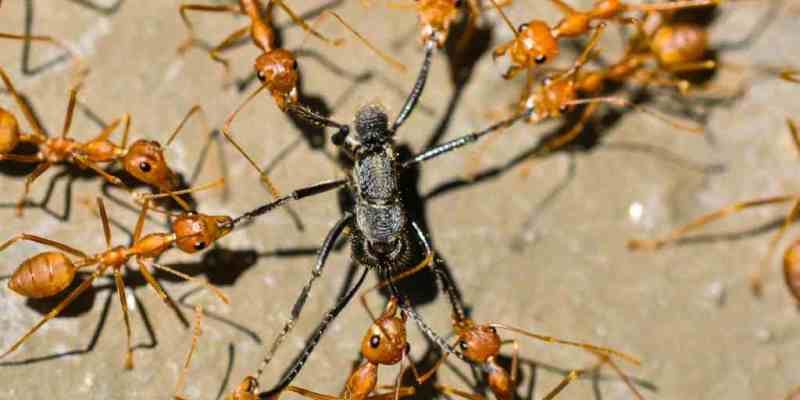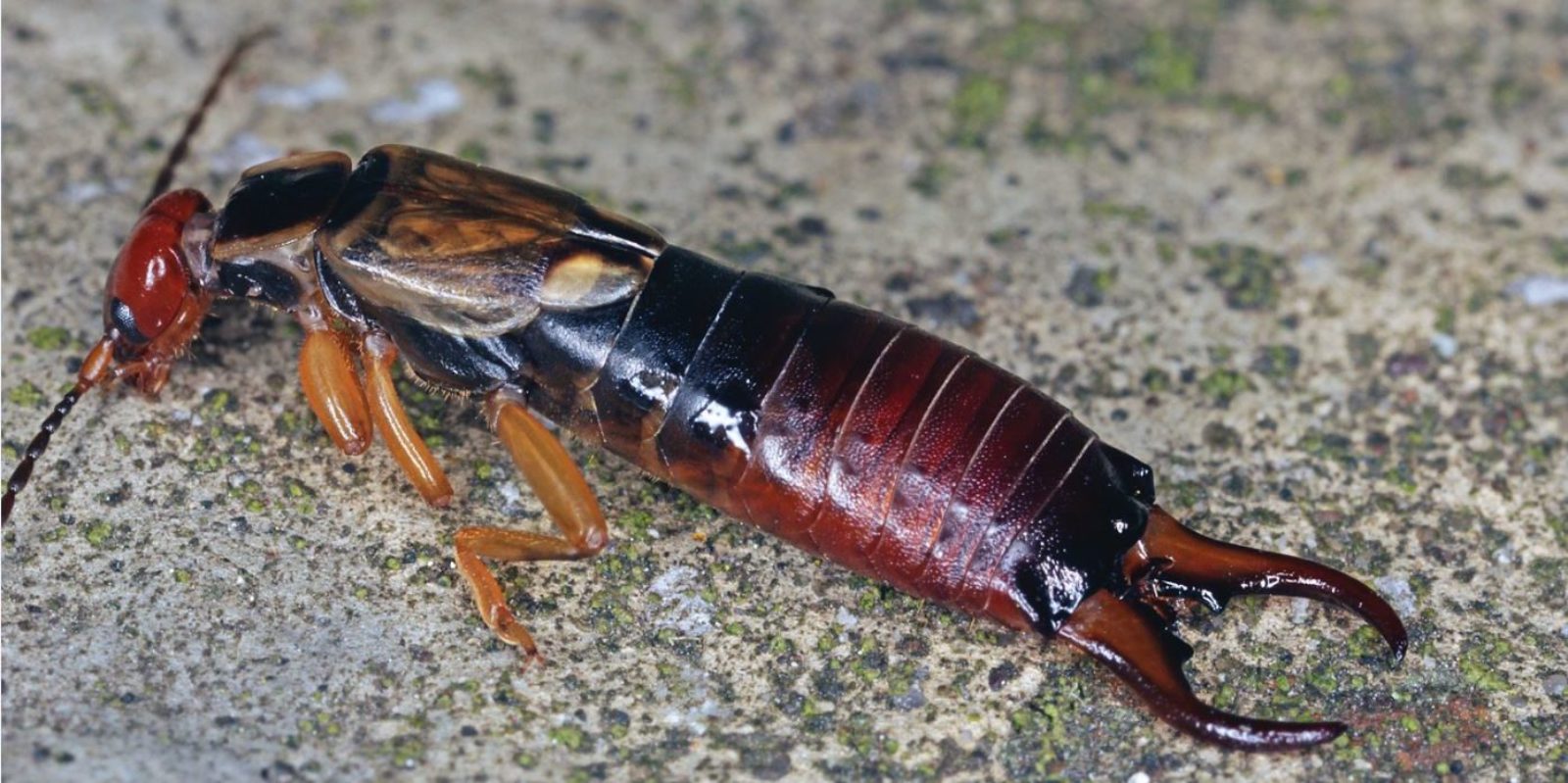
Earwigs
The terminal, forceps-like cerci make earwigs easily recognisable to most people, and the common Forficula auricularia is almost cosmopolitan in distribution, at least in the cooler regions of the world.
Although Dermaptera clearly belong in the ‘orthopteroid’ group, their exact relationships with the Orthoptera and other orders in this group are not clear, although the Dictyoptera may well be the closest.
Earwig antennae are long and simple, the prognathous head is broad with no ocelli, and the thorax and abdomen are generally flattened. The thickened fore wings, or tegmina, are modified as wing-covers, very similar to the elytra of staphylinid Coleoptera, but the hind wings are large, semicircular and membranous.
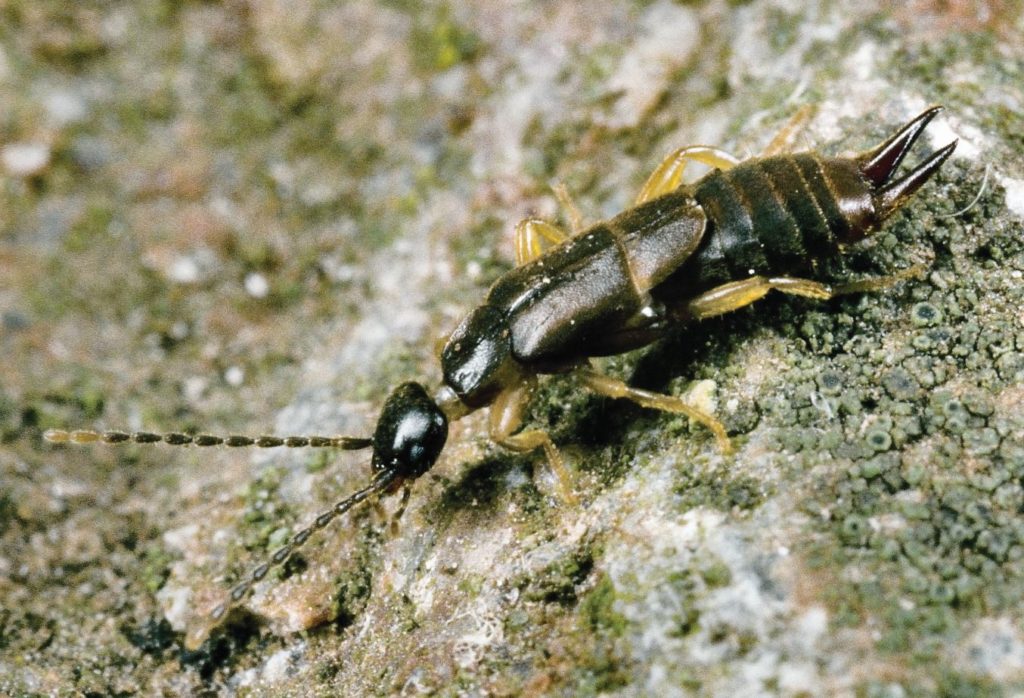
Some species fly readily, others more reluctantly, and the wing-folding mechanism is extremely complex to accommodate the large wings under such small covers. The abdominal cerci are usually straight in females, but more curved and enlarged in males, and they have a multitude of functions. As well as the more obvious functions of defence and prey capture, they also have a role in fighting, courtship and even helping to fold the wings after flight. Female Dermaptera show parental care of their eggs and newly hatched nymphs, keeping them together and guarding them, at least until after their first moult.
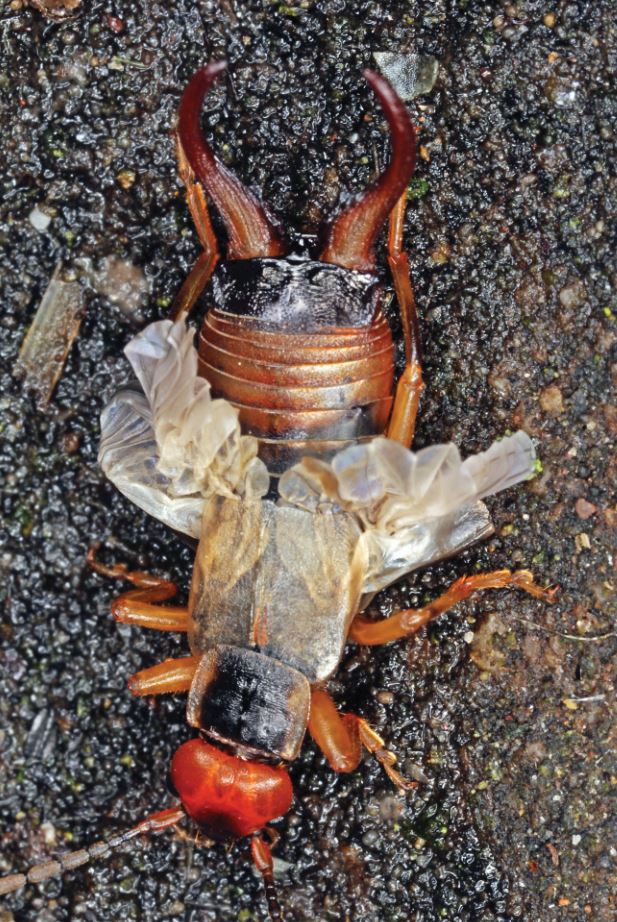
Forficula folding its wings Credit Colin Rew 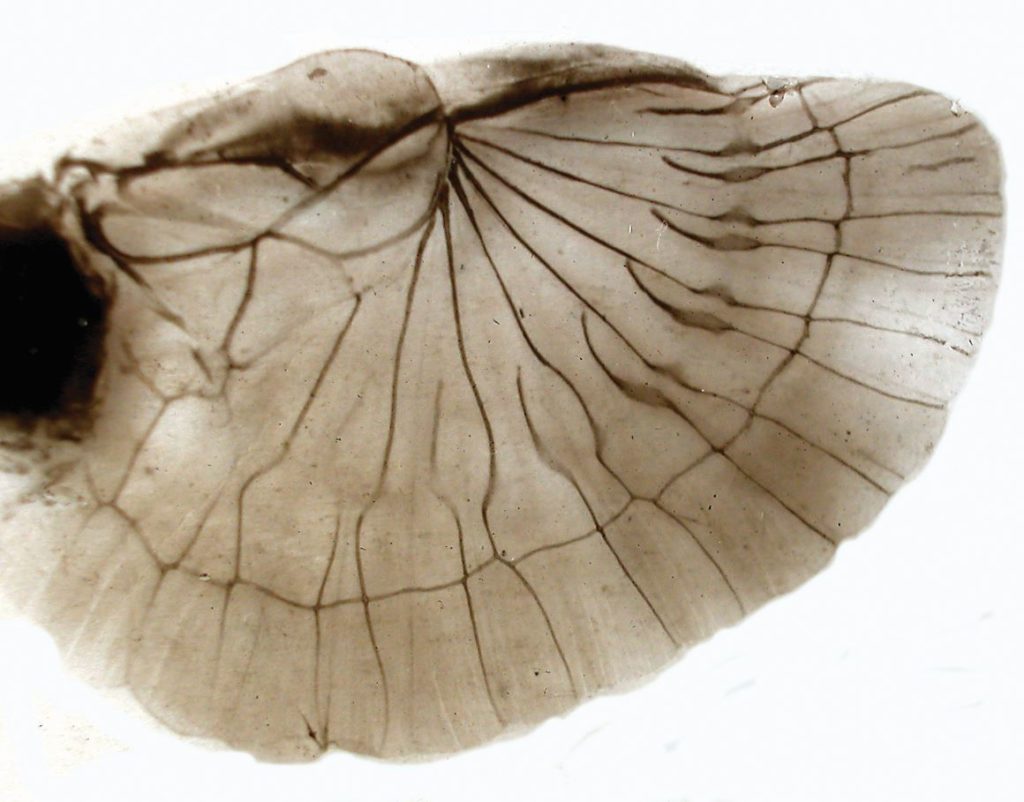
Hind wing of Forificula Credit Peter Barnard
Most earwigs are omnivorous, or else are scavengers, and are often regarded as pests when they feed in large numbers on flower buds. There are also two small parasitic groups of Dermaptera: the Hemimerina are ectoparasites of African rodents, while the Arixeniina are ectoparasites of SE Asian bats.
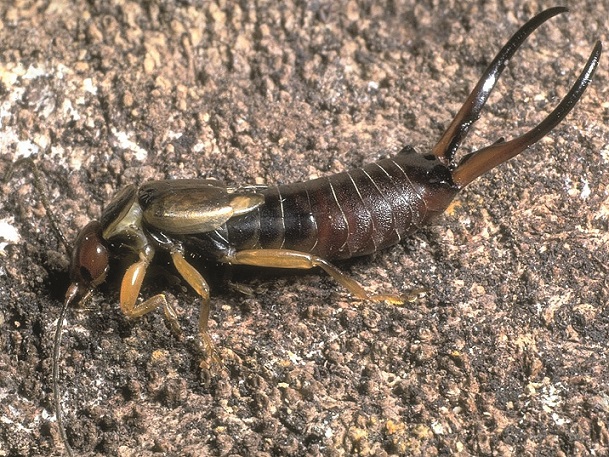
Worldwide there are around 2,000 known species in 8 families; in Britain there are 7 species in 4 families.
Identification help
